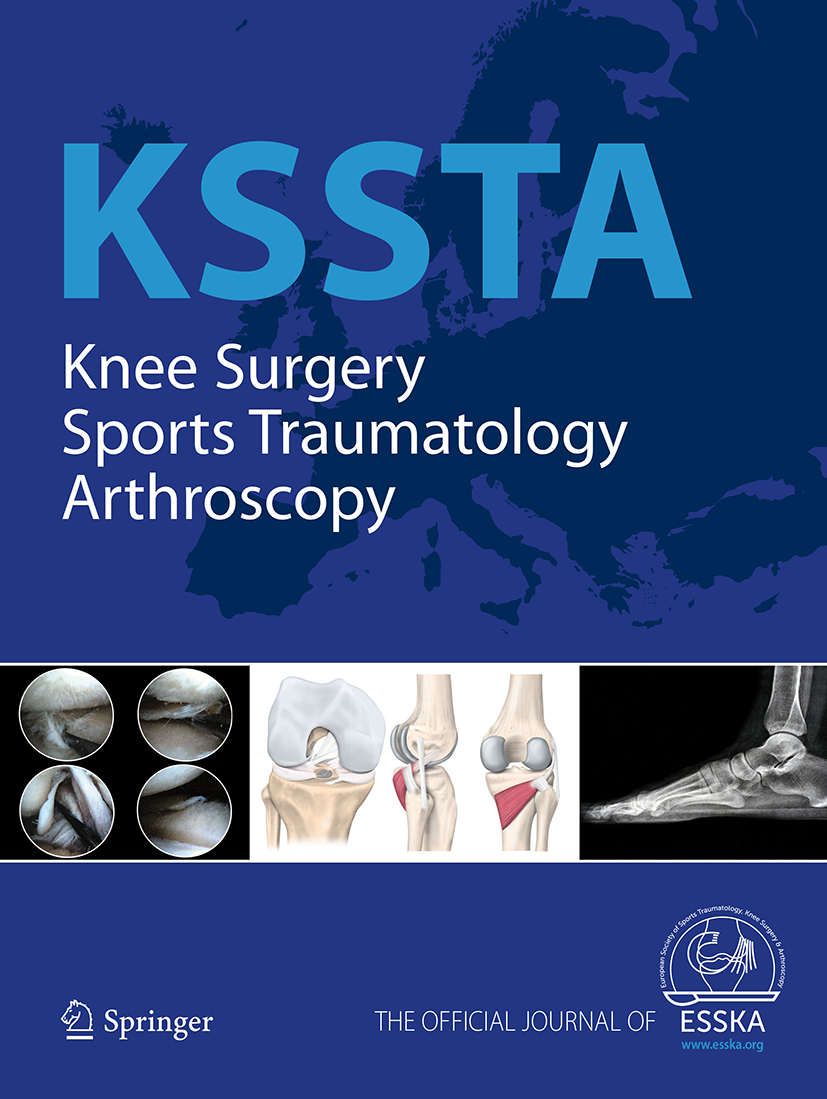
TKA: best outcome with tourniquet inflation before incision & deflation when cement harden

TKA: best outcome with tourniquet inflation before incision & deflation when cement harden
A randomized double-blind clinical trial of tourniquet application strategies for total knee arthroplasty
Knee Surg Sports Traumatol Arthrosc. 2013 Dec;21(12):2790-9. doi: 10.1007/s00167-012-2221-1. Epub 2012 Sep 28Did you know you're eligible to earn 0.5 CME credits for reading this report? Click Here
Synopsis
43 patients undergoing total knee arthroplasty were randomized to three different tourniquet protocols to determine which was optimal for blood loss and fit-to-discharge outcomes. The three tourniquet applications were as follows: inflation just prior to incision and deflation after cement hardening (Group 1), inflation just prior to cementing and deflation after cement solidification (Group 2), and inflation just prior to skin incision and deflation after wound closure and compressive bandaging (Group 3). The results indicated that Group 1 had lowest blood loss and best outcome on the Timed Up-&-Go (TUG test; factor of discharge criteria).
Was the allocation sequence adequately generated?
Was allocation adequately concealed?
Blinding Treatment Providers: Was knowledge of the allocated interventions adequately prevented?
Blinding Outcome Assessors: Was knowledge of the allocated interventions adequately prevented?
Blinding Patients: Was knowledge of the allocated interventions adequately prevented?
Was loss to follow-up (missing outcome data) infrequent?
Are reports of the study free of suggestion of selective outcome reporting?
Were outcomes objective, patient-important and assessed in a manner to limit bias (ie. duplicate assessors, Independent assessors)?
Was the sample size sufficiently large to assure a balance of prognosis and sufficiently large number of outcome events?
Was investigator expertise/experience with both treatment and control techniques likely the same (ie.were criteria for surgeon participation/expertise provided)?
Yes = 1
Uncertain = 0.5
Not Relevant = 0
No = 0
The Reporting Criteria Assessment evaluates the transparency with which authors report the methodological and trial characteristics of the trial within the publication. The assessment is divided into five categories which are presented below.
4/4
Randomization
4/4
Outcome Measurements
4/4
Inclusion / Exclusion
4/4
Therapy Description
4/5
Statistics
Detsky AS, Naylor CD, O'Rourke K, McGeer AJ, L'Abbé KA. J Clin Epidemiol. 1992;45:255-65
The Fragility Index is a tool that aids in the interpretation of significant findings, providing a measure of strength for a result. The Fragility Index represents the number of consecutive events that need to be added to a dichotomous outcome to make the finding no longer significant. A small number represents a weaker finding and a large number represents a stronger finding.
Why was this study needed now?
A risk/benefit relationship exists with tourniquet use in total knee arthroplasty. Advantages include a better operative field, easier cementing and reduced duration of surgery. However, the disadvantages of tourniquet use include soft tissue ischemia, increased risk of venous thromboembolic complications, joint swelling and stiffness, and thigh pain. The timing of tourniquet application in surgery has been implicated as having a profound effect on hematological outcomes, including blood loss and transfusion necessity. However, continued debate exists on optimal tourniquet use.
What was the principal research question?
How do three different tourniquet strategies (inflation just prior to incision and deflation after cement hardening; inflation just prior to cementing and deflation after solidification; inflation just prior to skin incision and deflation after wound closure and compressive bandaging) compare in total knee arthroplasty, assessed over the perioperative period? Does a longer tourniquet application reduce blood loss and improve discharge criteria in comparison to tourniquet protocols of shorter duration, assessed over the perioperative period?
What were the important findings?
- Mean tourniquet pressure (SD) and median tourniquet time [25th; 75th percentiles] were 288mmHg (53) and 37min [32;45] in Group 1, 331mmHg (30) and 11min [10;12] in Group 2, and 316mmHg (55) and 60min [57;72] in Group 3.
- The average duration of surgery was 62.0min in Group 1, 59.8min in Group 2, and 60.6min in Group 3. The difference between groups was not significant (p>0.05).
- Estimated blood volume loss in Group 1 was significantly lower than Group 2 for all methods of calculation (all P<0.05). Group 2 and Group 3 only significantly differed in estimated blood volume loss when calculated using the 'Classic' formula, with lower estimated blood volume loss for Group 3 compared to Group 2 (p=0.050). This formula is based on recommendations by the International Council for Standardization in Haematology
- No significant differences in the first 6 postoperative days (POD) were noted between groups for fit-to-discharge criteria concerning pain management, wound healing, or body temperature. TUG tests were significantly better among patients of Group 1 compared to both Group 2 and Group 3 (P=0.023 and 0.033, respectively). Subsequently, achieving fit-to-discharge criteria was significantly better in Group 1 compared to Group 3 (p=0.030); the difference between Group 1 and Group 2 was not significant.
- No complications were recorded over the first 6 postoperative days.
What should I remember most?
Longer tourniquet application was not associated with reduced blood loss and earlier attainment of discharge criteria compared to shorter tourniquet applications. Of the three strategies employed, inflation of the tourniquet just before skin incision and deflation after cement solidification appeared to have the optimal effect on blood loss and fit-to-discharge outcomes.
How will this affect the care of my patients?
The evidence presented in this study suggests that a tourniquet strategy of inflation before skin incision and deflation after cement hardening in total knee arthroplasty may yield the best results of the three strategies evaluated. However, it is important to note that as this was an interim report, definitive conclusions on the efficacy of each tourniquet protocol relative to the others should be withheld until further investigation is completed.
Learn about our AI Driven
High Impact Search Feature
Our AI driven High Impact metric calculates the impact an article will have by considering both the publishing journal and the content of the article itself. Built using the latest advances in natural language processing, OE High Impact predicts an article’s future number of citations better than impact factor alone.
Continue



 LOGIN
LOGIN

Join the Conversation
Please Login or Join to leave comments.